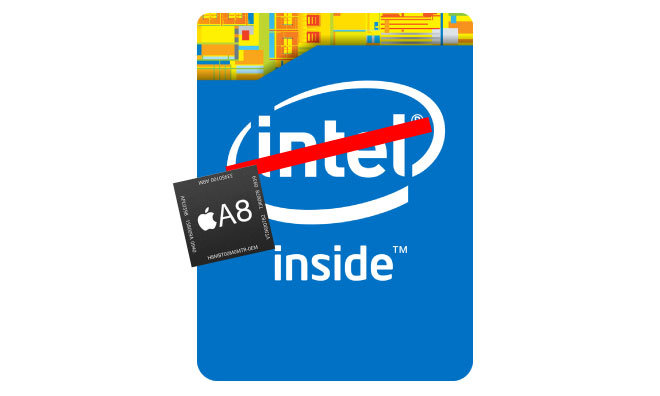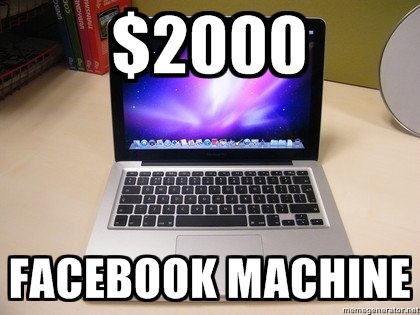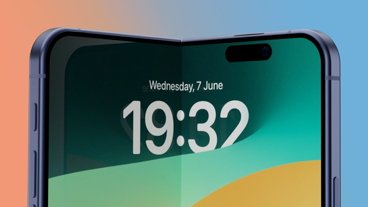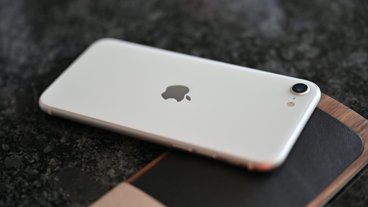Though many will scoff at the notion of an iPad and Mac that draw from the same family of application processors, it's not as farfetched as it seems. AppleInsider takes a look at why today's chipmaking giants could find themselves on the outside looking in during an Apple product launch in the near future.
Rumors that the Mac might eventually move to ARM began to float around seemingly minutes after the Apple-designed A4 bowed in the first-generation iPad. After all, the Mac has already survived two major architectural transitions in its history: from Motorola's 68000 to IBM's PowerPC in 1994, then from PowerPC to Intel's x86 in 2006. Why not a third?
Such a move is certainly in Apple's DNA. Since Steve Jobs returned in 1997, the company has made its bones by ignoring the vox populi and doing what it felt needed to be done, sometimes dragging consumers kicking and screaming along with them.
The original iMac had no floppy drive, no SCSI or serial ports, and no support for the Apple Desktop Bus. Instead, Jobs & Co. bet on a new standard called USB — Â before any Mac-compatible USB peripherals even existed.
The original iPod could only be used with a Mac and came with lower storage capacity than its competitors. "No wireless. Less space than a nomad. Lame," was one user's now-infamous reaction on Slashdot.
The original iPhone couldn't take advantage of 3G networks, required buyers to switch to AT&T, and didn't allow third-party applications. It also cost consumers $500 at the register, as it wasn't eligible for carrier subsidies.
As it turns out, none of that mattered.
Personal computing at a crossroads
History tells us that the Mac's migration from PowerPC to Intel was driven largely by performance. IBM's PowerPC roadmap simply couldn't give Apple the kind of horsepower they needed within the thermal envelope they required as they chased the desktop-to-laptop market shift.
Much has changed in the last 9 years. Computers have become "good enough" for the vast majority of consumers who use them for email, web browsing, and an occasional household budget spreadsheet — the gangbuster sales of Apple's relatively underpowered MacBook Air line can attest to that.
"I think PCs are going to be like trucks," Jobs once said in an interview. "Less people will need them. And this is going to make some people uneasy."
Like trucks, PCs are evolving. The base model of Ford's newest mega-popular F-150 pickup features an aluminum body to cut down on weight and a 2.7-liter V6 engine, changes designed to increase gas mileage at the expense of performance.
Similarly, PC manufacturers — Â including Apple — Â now tout lighter, thinner, less-powerful computers as they race to stay relevant in the midst of the mobile revolution.
To create the original MacBook Air, Apple needed a bespoke chip from Intel and a massive investment in large-scale CNC machining to manufacture the Air's aluminum unibody. Now, nearly every major PC maker boasts a me-too ultra-portable laptop with the same Intel chips inside a case that likely rolled off of a production line that Apple helped launch.
Their hardware may not quite reach Apple's standard — Â nobody else seems to be able to replicate the sheer glassy brilliance of the MacBook's trackpad — Â but they're "good enough."
That means it's time for Apple to move the goal posts again.
It's better to be a pirate than join the navy.
The reality of the modern-day global electronics supply chain is that almost anyone can put together a new product using commodity parts quickly and cheaply. An entrepreneur can bring an idea into an integration shop in Shenzhen on Monday and leave on Friday with a working prototype.
To gain a real advantage, companies need a competitive edge that their rivals can't just buy on the street. This is what led Apple to custom chips for its iOS devices, and it's why an ARM-powered MacBook isn't an absurd idea.
Bringing processor design in-house would give Apple a level of control over the Mac's internals that they haven't really had before. The iPhone and iPad consistently out-perform and out-live competition that comes with better specs on paper, thanks in large part to the high degree of integration between the numerous components that Apple designs for itself.
KGI Securities' Ming-Chi Kuo thinks that Apple can make its ARM-based processors equal in performance to Intel's Core i3 series within two years. For users whose most demanding computing task is rendering Farmville, that might make it "good enough."
Once that level is reached, Apple can begin to optimize the components for their needs. Advancements in fabrication process and VLSI could allow them to keep the same performance in a much lower-power chip, packing the devices into ever-thinner and lighter form factors that Intel's roadmap may not have otherwise made possible.
Every external supplier removed from the equation also gives Apple an additional degree of control over its product launch cycle. New models can launch when they're ready, rather than on Intel's mass-market schedule — Â this was a major reason that Apple ended its annual keynotes at the Macworld festival.
It could mean better secrecy, as well. New Apple products receive widespread coverage upon their announcement thanks in large part to the company's ability to keep them under wraps beforehand, a task made easier as fewer outsiders are involved.
No, YOU'RE stupid.
As with any contentious idea, there are numerous counter-arguments.
ARM-based chips might not be able to run Rosetta-like emulation layers, instantly rendering useless thousands of legacy software packages. Apple engineers, already struggling to make OS X run smoothly on Intel hardware, might not be able to make it usable on less-powerful silicon.
Without an in-house fabrication infrastructure, Apple would just be trading their dependence on Intel for a similar arrangement with Samsung or TSMC. A MacBook ARM could be the new Microsoft Surface RT, wasting potentially hundreds of millions of dollars that could be better spent on sapphire iPhone displays.
At the end of the day, none of that will matter as long as it's "good enough."
 Sam Oliver
Sam Oliver









-m.jpg)






 Wesley Hilliard
Wesley Hilliard
 Malcolm Owen
Malcolm Owen
 Andrew Orr
Andrew Orr
 William Gallagher
William Gallagher
 Sponsored Content
Sponsored Content
 Christine McKee
Christine McKee

 Thomas Sibilly
Thomas Sibilly







150 Comments
What consumer benefit is there to an ARM based Mac? MBAs already get great battery life. And there are new Windows OEM machines that are thinner/lighter than the current Airs. Would an ARM MBA be cheaper than its Intel equivalent?
Not too long ago, I updated a very computation-intenstive piece of software and compared a 2012 3.0 GHz 12-Core Mac Pro to an iPhone 6. To be fair, the software only leveraged the CPU (i.e. didn't tap into OpenCL which would have only been available on the Mac).
Of course the Mac beat the phone. But I then "normalized" a bit of the results. For the sake of ease, I assumed everything would be linear. I basically computed a theoretical amount of work for a single ARM core running at 3.0 GHz. Then compared to what a single core (Xeon) did on the Mac. The Xeon core was about 60% faster.
Now, this is just a single app that was very CPU-bound so obviously not the only measure. Still, the 60% figure was quite telling. Furthermore, such apps would realistically be tuned to tap into the GPU.
Can the gap close between ARM and Intel? Quite possible. But, how will such a gap be closed? If the answer is to just throw tons of ARM cores to compete with fewer Intel cores, I'm not sure that will work with the vast majority. Computation-intensive software would argubly be an equal match since it would saturate all the cores. But often times, sotware is single-threaded and most of your computer's resources are idle. So you end up comparing just a single core.
As a side note, not sure what percentage of Mac users use Boot Camp. I would imagine that if now on ARM, that would present a problem for those users.
"Good enough" won't cut it. It has to be equal or better than what the current user experience brings with Intel. Probably already been done - managers are probably just waiting for the AX series chips to come up to speed before actually considering RTM to the masses.
Lol nope. The EcoBoost is designed to increase fuel economy and increase (or at least maintain) performance.
Everyone screams "BUT WINDOWS". That's not important to people anymore. And if Apple sees a need for Intel compatibility, well, they can keep it in the professional Macs, and leave the consumer grade stuff on A series chips.
An ARM based Mac or an IOS based Mac? I can see an IOS based MBA before anything. Perhaps a pseudo hybrid OS in that it allows a mouse / trackpad based cursor, and obviously some kind of multi tasking. We already have iMovie, Pages and Numbers as well as Office and other powerful apps for IOS.